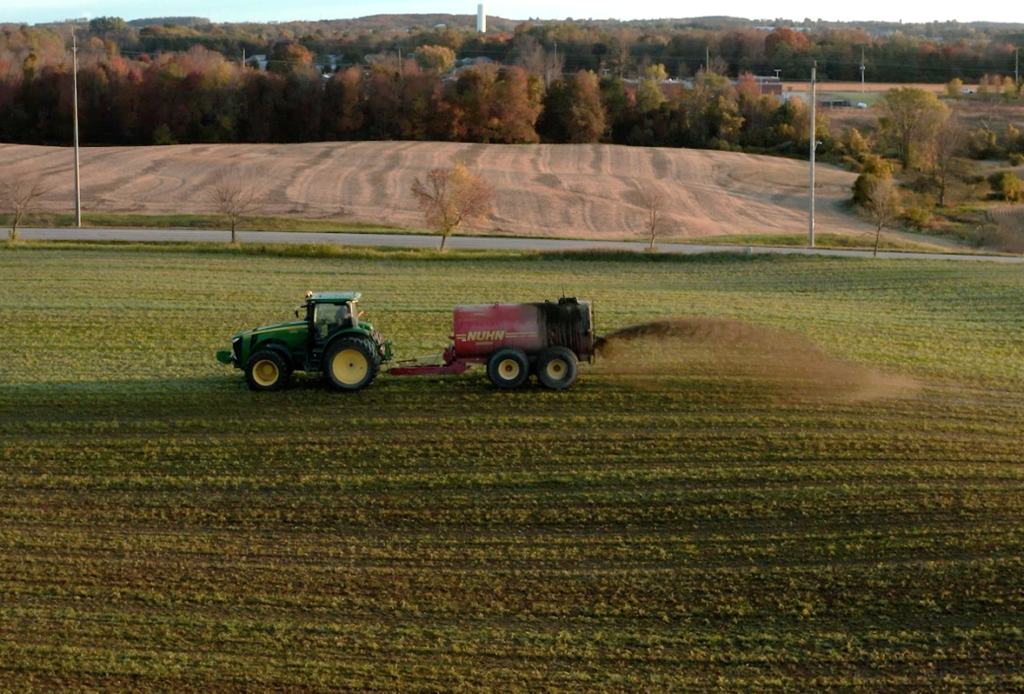Tandra Fraser, Derek Lynch, O’Halloran, Paul Voroney, Martin Entz, and Kari Dunfield. 2019. Soil phosphorus bioavailability as influenced by long-term management and applied phosphorus source. Canadian Journal of Soil Science. 99: 292-304. doi: 10.1139/cjss-2018-0075
Study Summary by Jordan Grigg and Cameron Ogilvie
key messages
- plant-available phosphorus was depleted under long-term organic management without manure
- on soils with a history of phosphorus fertilizer applications, ryegrass took up more phosphorus than necessary to increase yield at high fertilizer rates
- the source of the phosphorus fertilizer (mineral vs manure) did not influence how efficiently phosphorus was used by the plants
Phosphorus is an essential nutrient for crop growth and exists in a variety of chemical forms in soil. However, plants can only use one chemical form of phosphorus (called “orthophosphate”) to meet their nutritional needs. When there isn’t enough of this plant-available phosphorus in the soil, organic and/or synthetic fertilizers must be applied. Management can influence the amount of plant-available phosphorus in soil and whether fertilizers are needed. In this study, researchers collected soil from plots under long-term organic management without manure, organic with a one-time manure application, conventional, and recovered prairie management. The researchers hypothesized that crops grown on these soils would respond differently to phosphorus fertilizers. Italian ryegrass was planted to measure how a crop would respond to phosphorus availability, and manure and/or synthetic phosphorus were applied to the soil.
WHAT THEY FOUND
Soils under all types of long-term management had an abundance of phosphorus. But there was less plant-available phosphorus under organic management without manure compared to conventional or recovered prairie management. Because of this, Italian ryegrass grown in the soil under organic management without manure had the least biomass and phosphorus taken up by the plant. On the other hand, there was no difference in plant-available phosphorus between organic management with a single manure application compared to conventional or prairie management.
For the soil under organic management without manure, the amount of ryegrass biomass steadily increased as the phosphorus fertilizer application rate increased. For ryegrass grown on soils under all other management types, the increase in amount of biomass tapered off as the fertilizer application rate increased. This indicates that plants were taking up “luxury” phosphorus at high fertilizer application rates that they didn’t need to increase their yield. Therefore, plants were not using phosphorus fertilizer (mineral or manure) as efficiently when there was a history of high phosphorus applications on those soils.
WHY IT MATTERS
How soil fertility is managed can change the amount of plant-available phosphorus in the soil. Where little to no phosphorus fertilizer has been applied, crops are likely to respond rapidly to manure or synthetic phosphorus fertilizer. But if soils have history of manure or fertilizer application, overapplying phosphorus fertilizer can increase the amount of plant-available phosphorus more than is needed by the growing crop. That leftover amount of available phosphorus can be lost and have negative consequences to the surrounding environment.
HOW THEY DID IT
The soils for this study were taken from the Glenlea long-term cropping system experiment that was initiated in 1998. Large soil samples were taken from four management types: organic without manure, organic with a one-time application of composted manure, conventional, and restored prairie management. The soil cores were moved to a greenhouse, planted with Italian ryegrass, and fertilized at a range of phosphorus application rates. Prior to planting, soil samples were taken, and the concentration of plant-available phosphorus was determined using sequential fractionation – a process where some of the plant-available phosphorus is removed using one procedure, and the rest with another. What remains is called “residual” phosphorus; the residual is part of the total pool of phosphorus in the soil but is not available for plants to use.


